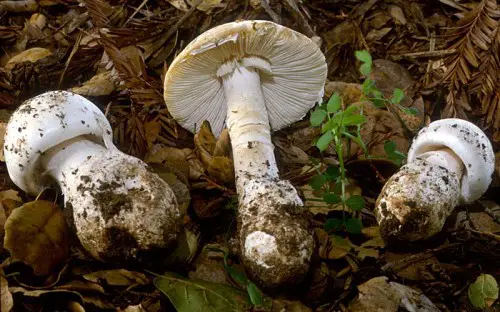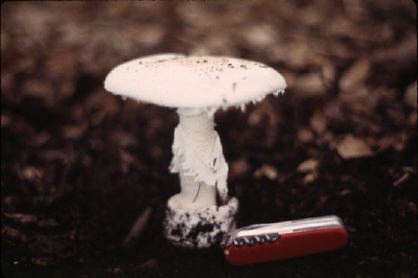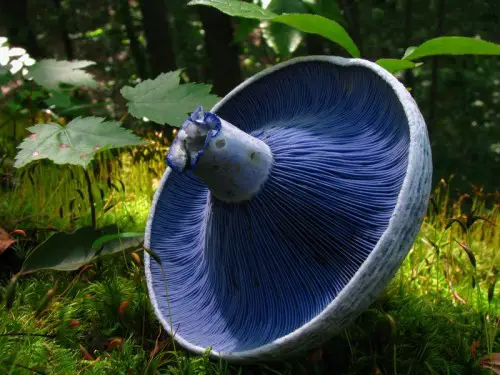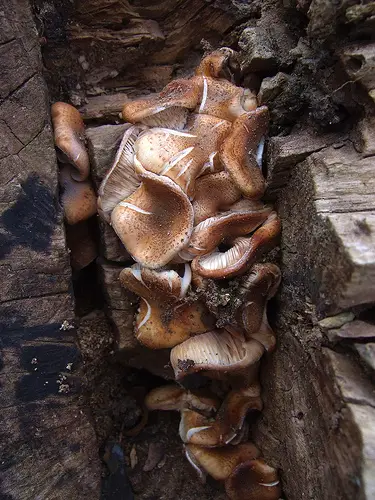Amanita ocreata
The Amanita ocreata is known as the Western North American destroying angel (destroying angel for short) and the death angel. This is because it is a poisonous basidiomycete fungus. It primarily lives in the Pacific Northwest and the California floristic provinces of North America. It is strongly associated with oak trees, particluarly the coast live oak, hazel, and Garry oak.
When the Western North American destroying angel fruits, it usually appears in the spring time. Its cap may be white or an ocher color, which is brownish in the center. However, its volva, gill, ring, and stipe is all white.
As its name suggests, the Western North American destroying angel can be deadly when consumed by humans. Unfortunately for those wandering in the forest trying to pick mushrooms to eat because they forgot to pack food (or perhaps are just curious folk), these fruiting bodies are easily confused with the toadstools that actually are edible and perfectly find to eat such as A. velosa, A. lanei, or volvariella speciosa. Immature Amanita ocreata’s are also difficult to distinguish between edible mushrooms of the Agaricus variety, also known as puffballs. They have a similar toxicity level to a death cap (A. phalloides) and the European destroying angels (A. virosa), as well as those from eastern North America (Amanita bisporigera).
They are also responsible for a number of potentially deadly fungi poisonings in California. The reason for this is that they contain a particular principal toxic compound called α-amanitin which actually damages the kidneys and the live. As there is no antidote, it will cause these organs to fail. For those who may have accidentally picked up a mushroom in the wild and are feeling the ill effects of it, the symptoms for the Amanita ocreata are initial gastrointestinal and colic-like abdominal pain, vomiting, and diarrhea. After 2 to 3 days, these symptoms will subside. However, there will be ongoing damage to ones internal organs so other symptoms such as jaundice, delirium, diarrhea, seizures, and even a coma may follow with death from liver failure between 6 to 16 days after it has been ingested.




